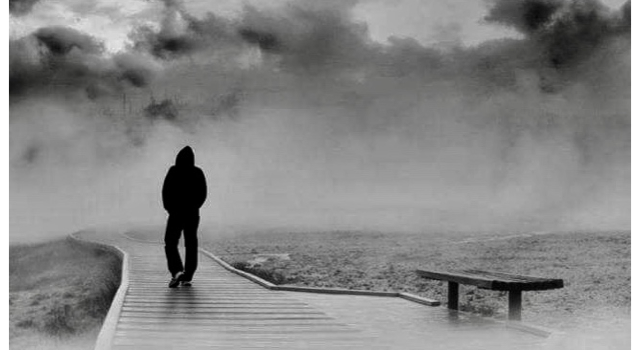The BBC has been accused by more than 100 of its staff of giving Israel…

It’s Nice To Be Remembered.
With a chest full of medals glinting in the sunshine Geoffrey Wellum screwed up his eyes and scoured the horizon in anticipation.
Then he heard it.
The distinctive hum of the Rolls-Royce Merlin engine, still as familiar as his own heartbeat.
As the first of four Spitfires came into view his eyes widened and a beam spread across his face.
For, 75 years-ago Geoffrey was a 19 year-old Spitfire pilot fighting the Messerschmitts of Hitler’s Luftwaffe.
He shot down at least three enemy aircraft and damaged many others.
Geoffrey was one of The Few, the 3,000 airmen who took to the skies in the greatest air battle in British history, to save us from invasion.
Today, those RAF heroes number fewer than 25, but yesterday six of them joined the Queen and other members of the Royal Family at a flypast marking the 75th anniversary of the start of the Battle of Britain.
Squadron Leader Geoffrey Wellum, DFC, 93, travelled from his home in Cornwall, to pay tribute to his fallen comrades.
“It’s a great privilege to be here” he said. “It’s nice to be remembered, because that means all the chaps that got killed are remembered. That’s what’s important, not medals or thanks”.
( Rachael Bletchly and Victoria Murphy, 11.07.2015 )
An 18-month-old Palestinian boy burned to death after Israeli illegal settlers set fire to his family house in Duma village, south of Nablus city, in the illegally-occupied West Bank.
The parents of Ali Saad Dawabsheh and his four-year-old brother were also injured in the attack.
Up to 75% of their bodies suffered burns, according to medics in Nablus’ Rafidia hospital.
Nabil Abu Rdeineh, a spokesman Mahmoud Abbas, the Palestinian president, said that the Israeli government was fully responsible for the crime as it continued to support illegal Israeli settlement activities and the protection of settlers.
He also blamed the international community for silence over crimes against Palestinians.
( Al Jazeera, 31.07.2015 ) .. aljazeera.com
Tirpitz The Pig.
In the spring of 1915, after months of harrying enemy cargo ships, the German cruiser Dresden was badly in need of repair.
Her captain, Fritz Emil von Ludecke decided to shelter in the neutral waters along the coast of southern Chile.
Since its launch in 1908, the Dresden had spent most of its time in these foreign waters and when the Mexican revolution broke out in 1913 the ship was tasked with protecting German nationals.
A year later the Dresden transported the deposed dictator Vitoriano Huerta to Jamaica where the British granted him asylum.
With the outbreak of war the South Atlantic became the Dresden’s theatre of operations.
At the battle of Coronel it helped to inflict a heavy defeat on the British and the ships HMS Good Hope and HMS Monmouth were both sunk with a huge loss of lives.
HMS Glasgow alone had made its escape and from then on there was a burning desire on the part of the Glasgow’s captain John Luce to wreak revenge.
The chance came a month later when the British encountered the German fleet at what became known as the battle of the Falkland Islands.
The German cruiser Leipzig was holed and of its crew, only 18 survived, but the Dresden again escaped.
Now cornered at Cumberland Bay, Kapitan Ludecke assumed his ship was safe but on 14 March 1915, disregarding Chile’s neutrality, the British opened fire.
The Dresden badly damaged, von Ludecke signalled his wish to surrender while at the same time making plans to abandon ship and scuttle the Dresden.
Safely ashore, the crew watched their vessel slowly sink below the water line.
Across the bay echoed the cheers from two British cruisers, HMS Glasgow and HMS Kent.
About an hour after the sinking, an exhausted survivor was spotted in the water, making his way towards the Glasgow.
One of the crew dived into the sea to offer assistance but was greeted with such resistance that a second sailor had to come to the rescue.
The prisoner of war was duly landed and studied with some disbelief by the men on board, for shivering, shaking and grunting, presumably in German, was a young pig.
Their unusual captive had been in the hold of the Dresden destined for meat.
Somehow he had managed to avoid a watery grave and was now a surprising British trophy, being adopted as the Glasgow’s mascot and named Tirpitz after Alfred von Tirpitz, the Grand Admiral and Commander of the German navy.
The Glasgow remained at sea for another year with Tirpitz roaming free on board.
When the ship returned to England however, there was a problem.
Regulations to prevent the spread of swine fever meant that Tirpitz was not allowed to land.
Eventually, because he had not been in contact with any other pigs, a special Order in Council was raised to allow him to come ashore.
Tirpitz went into quarantine before being transferred to Whale Island, the gunnery school near Portsmouth.
By now Tirpitz’s exploits were becoming known to the public with snippets of information beginning to appear in the press.
He managed to hang on until 1919 but then unhappily he went the way of most pigs, to the butchers.
His celebrity status was not quite forgotten however for while his torso may have ended up as sausages, his head was removed, stuffed and mounted on a wooden shield.
Should you wish to pay your respects to Tirpitz you can visit him at the Imperial War Museum, London.
( Janet Toms )
Israeli Soldiers Abduct, Gang-Rape And Murder A Palestinian Girl.
She was abducted on Aug. 12, 1949 by Israeli soldiers near the Nirim military outpost in the Negev desert, close to the illegally-occupied Gaza Strip.
The unnamed Palestinian Bedouin girl, in her mid-teens, was then raped and executed.
Her tragedy remained hidden in the Israeli army’s archives for 54 years, recorded in military court testimonies and a single entry in former Prime Minister David Ben-Gurion’s diary, where he referred to it as a “horrific atrocity” in the early years of the state.
In 2003, Israeli newspaper Haaretz obtained classified documents including the testimonies of the 20 soldiers involved in the case, and published an article in Hebrew on the account.
It did not receive media attention.
The girl was brought back to the outpost, where her clothes were pulled off.
She was forced under the shower by the platoon sergeant.
He washed her down with his own hands, while his fellow soldiers enjoyed the show.
She was then taken into a hut and gang-raped by three soldiers.
At about 5 p.m., they brought a barber to cut her hair short, after which she was forced to shower once more in front of the officer and sergeant.
The second lieutenant ordered the soldiers to prepare for a party.
Tables were set up, wine poured and food laid out.
Platoon commander ‘Moshe’ gave his soldiers a pep talk on Zionism and the importance of the troops’ contribution to the newly founded state.
They read excerpts from the Bible and rejoiced.
Just before the end of the party, Moshe gave his soldiers two options regarding their captive: She was either to become a kitchen worker or their sex slave.
Most replied: “We want to fuck”.
The commander drew up a three-day gang-rape schedule for his three squads to alternate.
On the first night, he went in with one of his sergeants, Michael.
They left her unconscious.
When she tried to speak up the next morning, she was executed.
Her body was placed in a grave about 30cm deep.
( Al Arabiya News, 17.08.2015 ) .. alarabiya.net
Disaster Struck The World’s Largest Airship.
On a damp and blustery October afternoon in 1930, the world’s largest airship set off from Cardington near Bedford, on its maiden flight to India.
On board R101 of the Imperial Airship Service were 54 crew and passengers, including Lord Thomson, the Air Minister.
Just after 2am the following morning, while battling a storm over France, the hydrogen-filled behemoth suddenly plunged to the ground near Beauvais and burst into flames.
Of those on board, only six survived and Britain’s bold experiment with passenger airships came to an abrupt end.
The shed in which R101 was built was the largest building in the British Empire – so big that the Titanic would have fitted inside, apart from the last 40 feet of her bow.
The airship R101 was 777 feet long and had more similarities to a passenger liner than an aircraft.
It was the same length as 29 buses placed end to end and twice the height of St Paul’s Cathedral.
Designed to offer 100 passengers the height of luxury, it had cabins fitted with bunk beds, a spacious lounge, dining room and a viewing deck.
The decor included potted palms, Axminster carpets and walls draped with blue velvet.
There was even a smoking lounge, a remarkable feature considering the vessel was inflated with highly inflammable gas.
Cardington’s handsome church, St Mary’s, contains a memorial to those who perished in the disaster.
Above it is the ragged, scorched RAF ensign which flew from the tail of R101 and was recovered from the crash site.
Across the road is a cemetery where the victims were buried in a mass grave.
A white memorial tomb marks the spot.
It carries their names and the inscription ‘Here lie the bodies of 48 officers and men who perished in H.M.Airship R101 at Beauvais, France, October 5th 1930’.
( Bob Barton, Best of British magazine, April 2015 )
The Ring Of Remembrance.
The Nord-Pas-de-Calais is home to an impressive and moving memorial to the 600,000 soldiers who were killed in this part of France during the First World War.
It was inaugurated by President Hollande in a solemn ceremony on November 11, 2014.
The message from its creators is one of brotherhood: “The Ring of Remembrance is not a celebration of victory but a symbol of the shared suffering of all the soldiers who fought there.”
Set just below France’s National Cemetery, Notre-Dame de Lorette, it was designed by architect Philippe Prost in the shape of a vast elliptical 374 yard ring.
The names of the fallen from over 40 countries worldwide are inscribed in white letters on 500 gold-coloured steel panels.
They are there in alphabetical order without note of nationality, religion or rank.
Allies and enemies together, equal in death.
The preparation of the five and a half acre site was not without its problems.
As at least three of the deadly battles of Artois had been fought there and across the surrounding area, between October 1914 and October 1915, the land had to be cleared of mines and shells.
Then, as was only to be expected in such a place of slaughter, the remains of six French soldiers and one German were discovered.
For historian Yves Le Maner, closely involved with the project, this extraordinary monument expresses “the epitome of mass death, but also the memory of so many individuals who existed and whose talent and intelligence were lost to humanity.”
( Patricia Stoughton, November 2015 )
Russian POWs Given Rough Treatment By The Germans.
I left school aged 14 in 1936 to join my father in the building trade as an apprentice bricklayer.
My other love, in addition to bricklaying, was music and I started clarinet lessons aged 13.
In January 1942 I was called up and drafted into the Somerset Light Infantry.
During several months of training I successfully auditioned to become a member of the band of the 7th Battalion Somerset Light Infantry and played in many concerts in the towns we were sent to for training.
My battalion was shipped from Newhaven to Normandy about 10 days after D-Day.
My own period of active service lasted only about a week.
On 30 June, I was taken prisoner, having lost contact with my unit.
The three Germans who captured me were an SS regiment and I realised that I was in a tight corner – it was common knowledge that the SS often shot prisoners and these chaps were clearly not pleased to be lumbered with one English private.
They had a heated discussion about what to do with me and I realised I must make personal contact with them.
I picked up two of their names – the loudest was Helmut and another was Otto – I used my few words of German to explain that as soldiers we were all in the same boat and called them by their first names.
Luckily for me it worked, the tension fell and I was soon passed on to other non-SS servicemen.
A few days later I was put on a train with hundreds of other prisoners of many nationalities for shipment to Germany.
However, we didn’t get very far before the train was attacked by a squadron of American Typhoon fighter planes firing 20mm cannon shells.
I was seated between two young GIs who were both killed instantly when the shells tore into our compartment.
Miraculously, I was completely untouched but around 30 allied POWs were killed and many more seriously wounded.
The death toll would have been higher had it not been for the courage of three Americans who climbed onto the roof of the train and waved their shirts at the planes and prevented a second attack.
We remained in the train overnight and next morning I awoke to find I was partly paralysed and could hardly speak.
I was taken to a hospital in Chalons where a German doctor told me that he had seen many similar cases among German troops.
I believe I was suffering from what is now called Combat Stress Reaction.
My symptoms slowly improved over the next month and eventually I was considered fit enough to continue my train journey to Stalag IV-B the huge POW camp near Muhlberg about 30 miles from Dresden.
My stay in Stalag IV-B was short.
I was transferred to Stalag IV-A and then to a work camp associated with IV-A.
In each of the camps there were more Russians than any other nationality and they were given particularly rough treatment by the Germans.
Most of them were in rags, half-starved, often with serious wounds and illnesses and many died each day.
We were liberated by a detachment of General Patton’s US Third Army about two weeks before the war ended.
The Third Army took us by truck to Belgium from where we were flown home.
I was in poor health and spent three months in Northfield Hospital in Birmingham before demob and return to my bricklaying job.
( Douglas G. Rowden, February 2016 )
The Creation Of A Jewish State, A New Country Called Israel.
In 1917, the Balfour Declaration transferred rule of the middle-eastern region known as Palestine to the British Empire as a temporary national home for Jewish people.
Between 1917 and 1948, Palestine was inhabited by Jewish immigrants who supported the idea of Zionism (the right of the Jewish people to return to the Holy Land) and Arabic-speaking Muslims and Christians who had occupied the land for many centuries.
Tension began to form between the Arab Palestinians and the Jewish immigrants as both groups tried to take claim over the same portions of religiously-significant land.
In 1948, the Balfour Declaration was scheduled to expire and Great Britain would no longer rule Palestine.
The question over what to do with the tumultuous country was turned over to the United Nations who would eventually decide to create the new country of Israel, specifically as a promised homeland for Jewish people.
U.S. President Harry Truman was the first world leader to officially recognise Israel as a legitimate Jewish state on May 14, 1948, only eleven minutes after its creation.
His decision came after much discussion and advice from the White House staff who had differing viewpoints.
Some advisors felt that creating a Jewish state was the only proper response to the holocaust and would benefit American interests.
Others took the opposite view, concerned about that the creation of a Jewish state would create more conflict in an already tumultuous region.
( National Archives ) .. trumanlibrary.gov
Was This Propaganda To Scare The People?
Did anyone else find it funny how Robocop-style police carried out anti-terror attack exercises in London, with chilling pictures of mock corpses and warnings that injured people will be left to die presented to the media, the day before MPs were urged to vote for war to keep our streets safe.
How similar that was to February 2003, when Tony Blair sent 450 armed troops and tanks to parade around Heathrow Airport, days before a million people were set to take part in a ‘Not In My Name’ march, after an “unspecified al Qaeda threat” that never materialised.
And to think we’ve always felt morally superior to the Nazis for having a propaganda machine that warped their people’s minds.
( Brian Reade, 05.12.2015 )



This Post Has 0 Comments